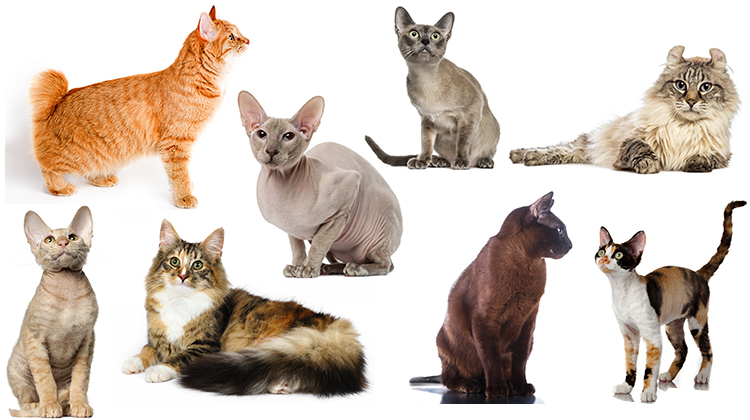12 felines you probably haven’t heard of…yet.
Domestic cats have a long history that originated in the Fertile Crescent nearly 10,000 years ago.[1] Since humans first noticed these independent and willful creatures, cats have functioned as laborers, adversaries, pests, faithful friends and, once, even as gods.[2]
With such a lengthy back story, it’s no surprise that different cat breeds evolved, including those that got a lot of “help” from humans. Cats were and continue to be bred for everything from enhanced coat quality to advanced intelligence—humans have even enhanced recessive genes that nature introduced as a quirky trait then promptly forgot.
New cat breeds are regularly recognized and while some become official breeds in the Cat Fancy Association (CFA) and/or The International Cat Association (TICA), others are forgotten and relegated to the history books. The CFA recognizes 42 breeds for its championship class; TICA recognizes 71 championship breeds. Here are 12 breeds you’ve probably never heard of.
Kurilian Bobtail
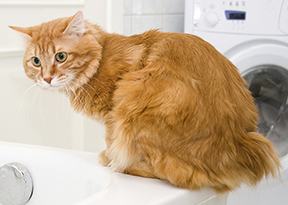
The Kurilian Bobtail hails from the Kurilian islands in Russia. This breed is well-known for its hunting prowess. They have long, silky coats that protect from the cold climate and a very short tail. Despite their somewhat wild appearance, they are considered to be trusting and very gentle. Highly intelligent and playful, Kurilians reportedly bond to their humans quite affectionately and will exhibit signs of anxiety when separated from their people. They are recognized as a championship breed by TICA.
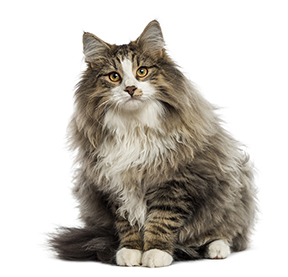
Norwegian Forest Cat
You might have heard of these lovable giants, but you probably don’t know their backstory. It’s believed the Norwegian Forest Cat migrated to Norway on Viking ships around 1,000 C.E. Their long-hair and double coat helps protect them from extreme cold and their personality (intelligent, semi-active and social) has ensured their survival for hundreds of years. Norse legends refer to these cats as “mountain-dwelling fairy cat(s) with an ability to climb sheer rock faces that other cats could not manage.” This giant cat has successfully earned its place in the CFA as an official breed, as well as with TICA.
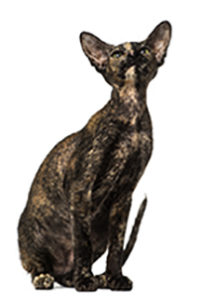
Peterbald
Peterbalds are a mix between a sphynx cat and an oriental shorthair that originated in Russia. At first glance, they appear frail and thin, yet their average body temperature stays consistent around 105 degrees, giving them an incredibly fast metabolism and making them naturally immune to many common illnesses and communicable diseases. Peterbalds come in a variety of coat lengths and patterns, including a hairless version. The Peterbald is recognized as a championship breed by TICA.
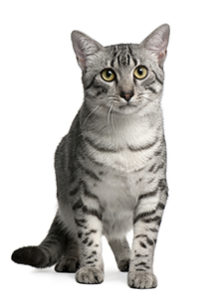
Egyptian Mau
Hailing originally from Egypt, the Egyptian Mau is one of the fastest moving cats, clocking speeds of more than 30 mph. They are one of the few cats sporting a naturally spotted coat, and are renowned for their striking exotic looks. Highly interactive, they adore their humans and enjoy riding on shoulders or perching atop refrigerators. Maus are also exceptionally intelligent and extremely loyal to their owners. These beautiful, elegant cats have earned their place as a recognized championship breed with CFA and TICA.
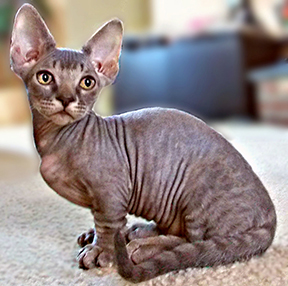
Minskin
The Minskin is a cross between a Munchkin (a short-legged breed) and a Sphynx (a hairless breed). The result is a nearly hairless cat—they have fur on the face, ears, nose, legs and tail. Minksins have a round face and wide, round eyes, short legs and a stocky body. Affectionate and outgoing, these cats don’t especially like climbing (understandably), preferring to keep their stocky legs on the ground. The Minskin is a considered a new preliminary breed by TICA.
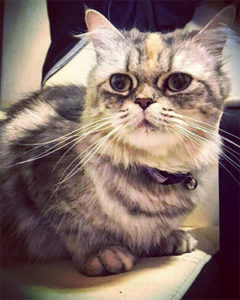 Shirazi
Shirazi
The Shirazi is a semi-domestic breed that naturally occurred in Egypt when Egyptian Maus and Persians began to inter-breed. These unique looking street cats are another “spotted” cat from the Middle East and reportedly sell for up to £300, despite not being listed as an “official breed.” These semi-longhaired cats inherited the coloring of Persians and the personable temperament of the Mau, creating a good-natured breed that requires extra grooming.[3]
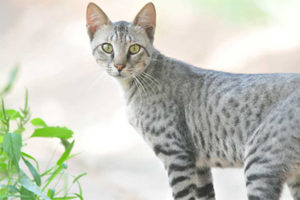 Bahraini Dilmun
Bahraini Dilmun
There are only a few naturally spotted domestic cat breeds and the Bahraini Dilmuni (also known as a “delmun”) is one of them. Their short, spotted coats help them survive the hot desert temperatures of Bahraini. Although this breed is in danger of disappearing due to interbreeding with abandoned Persian cats in the region, there are a few devoted individuals in the Persian Gulf who are trying to preserve the unique cat.[4]
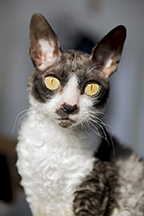
Devon Rex
The Devon Rex has a short, curled coat that feels like velvet. They’re known as pranksters and will keep you entertained with their antics. They’re quite often referred to as “pixies” for their unique personality, large ears and elfin face. Word of warning: they are “food hounds,” so if you plan on bringing one into your home, be sure you watch their diet carefully. This velveteen cat is also recognized as a championship breed by the CFA and TICA.
Sokoke
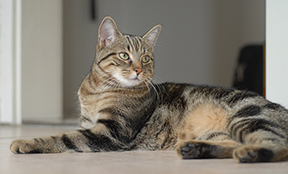 The Sokoke is a striped cat that originated in the Arabuko Sokoke forest in Kenya. Natural hunters, these cats have long, thin legs and a unique gait. Their ears are long (helping them to hear even the slightest sounds) and they walk on the tips of their toes thanks to longer than normal growth in the hind end, which helps them pick up speed during a hunt. Since their natural occurrence in Kenya, they have been standardized for breeding since 1993 by the Fédération Internationale Féline (FIFe). They are, by all reports, quite personable, fairly talkative and highly intelligent.[5]
The Sokoke is a striped cat that originated in the Arabuko Sokoke forest in Kenya. Natural hunters, these cats have long, thin legs and a unique gait. Their ears are long (helping them to hear even the slightest sounds) and they walk on the tips of their toes thanks to longer than normal growth in the hind end, which helps them pick up speed during a hunt. Since their natural occurrence in Kenya, they have been standardized for breeding since 1993 by the Fédération Internationale Féline (FIFe). They are, by all reports, quite personable, fairly talkative and highly intelligent.[5]
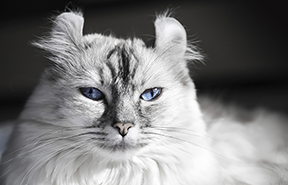
American Curl
American Curls get their name from the unique curl of their ears. A result of a random mutation in housecats, the breed’s tall, unusually curled ears require extra care. They are very adaptable cats who enjoy being around people and other animals. The American Curl is yet another officially recognized breed by CFA and TICA.
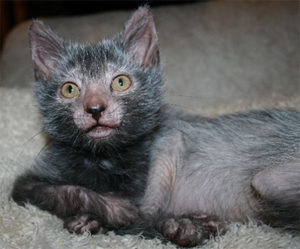 Lykoi
Lykoi
The Lykoi has been bred to highlight a genetic mutation that occurs naturally in domestic cats. Their patchy coat and bright yellow eyes have earned them the name of “Werewolf cats.” Their personality is quite different from the werewolf legend—owners report these cats bond to them quite intensely and have been known to be protective of them.[6] The Lykoi is recognized as a championship breed by TICA.
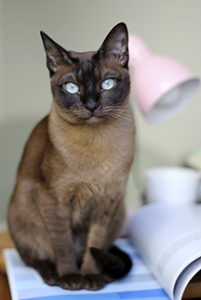
Tonkinese
The Tonkinese is this writer’s most favorite breed. Tonkinese are a cross between Siamese and Burmese cats, giving the breed an oriental look with a more muscular body than is usually found in Siamese. These friendly cats are stunning with their aqua or violet-colored eyes and short, silky coats that come in eight colors and three patterns (solid, mink or pointed). These cats truly enjoy people and other pets, and in most cases will be found talking to you about their day (they are quite vocal) or curled up on your shoulder as you write, making them one of the most playful, sociable and beautiful cats in the world (not that I’m biased). CFA and TICA have recognized this cat as a championship breed.
About the Author: Stacy Mantle is a fulltime freelance writer, bestselling author and founder of PetsWeekly.com. She resides in the deserts of the Southwest with a few dogs, several cats and a very understanding husband.
[1] Pickrell, J. Oldest Known Cat? National Geographic News, www.news.nationalgeographic.com/news/2004/04/0408_oldestpetcat.html
[2] Bastet: Egyptian Goddess, Encyclopaedia Britannica: www.britannica.com/topic/Bastet
[3] Hartwell, S. (2013). CAT VARIETIES OF THE MIDDLE EAST. Retrieved June 02, 2017, from https://messybeast.com/middle-eastern-breeds.htm
[4] Hartwell, S. (2013). CAT VARIETIES OF THE MIDDLE EAST. Retrieved June 02, 2017, from https://messybeast.com/middle-eastern-breeds.htm
[5] Lauridsen, H. (1997, June). The Sokoke: Cat Breed FAQ. Retrieved June 06, 2017, from https://www.fanciers.com/breed-faqs/sokoke-faq.html
[6] TICA. (n.d.). Lykoi Introduction. Retrieved June 02, 2017, from https://tica.org/cat-breeds/item/1207




